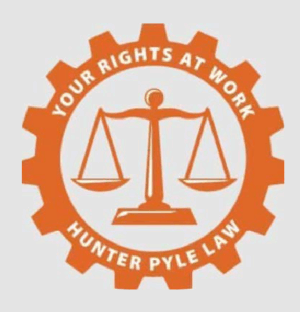Duran v. U.S. Bank: Statistics Remain an Important and Viable Tool in Achieving Class Certification
On May 29, 2014, the California Supreme Court issued its decision in Duran v. U.S. Bank (2014) S20093. Class action practitioners throughout the state have been awaiting this decision for some time, hoping that it will provide guidance as to how to properly litigate “misclassification” cases. (Misclassification cases are those in which the plaintiffs claim that they were improperly exempted from overtime and other wage and hour laws.)
those in which the plaintiffs claim that they were improperly exempted from overtime and other wage and hour laws.)
Duran may not have gone as far as some hoped. However, its most important point is clear: Statistics remain a viable way to prove both liability and damages in class actions-provided, that is, that the methodology underlying the statistics is sound.
A summary of the facts and history of the case follows: Duran involves a class action by loan officers at U.S. Bank who claimed that they had been misclassified as exempt employees under the outside sales exemption. (That exemption applies to employees who spend more than 50 percent of their work time engaging in sales activities away from their offices. California law regarding that exemption differs significantly from federal law. See Ramirez v. Yosemite Water Co. (1999) 20 Cal.4th 785.)
Duran was filed in Alameda County, and drew an excellent, well-regarded judge, the Honorable Robert B. Freedman. Judge Freedman certified a class of 260 loan officers. The parties then presented competing trial plans. Ultimately, Judge Freedman chose to take testimony from 20 randomly selected class members, as well as the two named class representatives. To his credit, Judge Freedman attempted to find a middle road that was fair to all parties. In response, U.S. Bank sought to introduce testimony from class members outside of that random sample. Judge Freedman denied this request.
Employers seeking to avoid paying overtime based on the outside salesperson exemption bear the burden of proving that their employees spend more than 50 percent of their time performing sales work away from their offices. In Phase One of the trial, Judge Freedman found that U.S. Bank had not met its burden of proof on this issue. He then found that the entire class of loan officers was misclassified as exempt, and that each of them was owed overtime.
In Phase Two of the trial, the parties presented expert testimony as to the damages suffered by the class members. The plaintiffs’ expert, Richard Drogin, testified that the class members worked an average of 11.87 hours of overtime per week. Somewhat astonishingly, Dr. Drogin testified that the margin of error for his calculation was 5.14 hours each week, or 43.3 percent. U.S. Bank’s expert, Andrew Hildreth, criticized the plaintiffs’ findings and opined that the sample size described above was too small to be free of bias. Ultimately, Judge Freedman found for the plaintiffs in the amount of approximately fifteen million dollars ($15,000,000).
The Court of Appeal reversed. The California Supreme Court granted review. Here are the main points made in the Court’s opinion:
- Class certification continues to be viable even where individualized proof regarding class members’ nonexempt status and the amount of their damages might be needed. (See p. 24) In other words, individual issues do not bar class certification if they are manageable.
- As a general rule, defenses that require individual inquiry into damages do not defeat class certification. (See p. 25)
- Surveys and statistics may be used to manage individual issues. (See p. 26) Sampling may be used to prove an employer’s centralized practices. However, statistical plans must be sound.
- It is probably not enough for plaintiffs to argue that a statistical plan will at some point be developed. Rather, plaintiffs should create a statistical plan well before their motion for class certification.
- Trial plans must allow defendants to present their affirmative defenses, even when those defenses involve individual issues. (See p. 29)
A large part of the Duran decision focused on the plaintiffs’ sampling methodology. The Court distinguished between sampling used to prove liability and sampling used to prove damages. Recent federal cases have split on whether sampling can be used to prove liability. Cf. Dilts v. Penske Logistics, LLC (S.D.Cal.2010) 267 F.R.D. 625, 638 (sampling may be used to determine liability in off-the-clock case) and In re Wells Fargo Home Mortgage Overtime Pay Litigation (N.D.Cal.2010) 268 F.R.D. 604, 612 (sampling may not be used to prove liability). However, it is relatively well-settled that sampling may be used to prove damages. See Bell 115 Cal.App.4th 721-722. (This is also true in federal court, at least in the Ninth Circuit. See Leyva v. Medline Indus. (9th Cir.2012) 716 F.3d 510.)
The Court further held that when sampling is used, it must be employed carefully. For example, the sample size must be large enough. (See p. 40) The sample must be randomly selected. (See p. 41) The sample must be representative, and, if that changes, the sample must be adjusted. (See p. 43) Named plaintiffs should not be included in the sample by virtue of their status as named plaintiffs. (See p. 44) Finally, the margin of error cannot be too high. (See p. 46)
Justice Gordon Liu’s concurrence makes several additional points. First, variation in the way that employees actually spend their work time does not preclude a finding that employer’s expectations as to how employees spend their work time are susceptible to common proof. (See Conc., p. 7) Second, valid sampling plans must consider individual variations within the subject population. (See Conc., p. 9) Finally, statistical and individual evidence must be considered and weighed together. In misclassification cases, courts should consider this evidence along with other types of evidence such as the employer’s policies, the customs of the industry, and testimony of managers and supervisors. (See Conc., p. 10)
Interestingly, the Duran Court expressly elected not reach the core issue in the case, whether statistics alone can be used to prove liability (as opposed to damages) in a misclassification class action. That is an issue for another day, and one that we will continue to monitor closely.
The attorneys at Hunter Pyle Law have successfully used statistical models to achieve class certification in numerous cases. They have also handled cases involving employees who were wrongfully classified as exempt.
Attorneys Hunter Pyle and Mana Barari recently settled a class action involving approximately 350 outside sales people who were improperly classified as exempt. If you think you are improperly classified as exempt, or that you are owed overtime or meal and rest periods, please contact us for a free consultation at 510.444.4400, or email inquire@hunterpylelaw.com.


